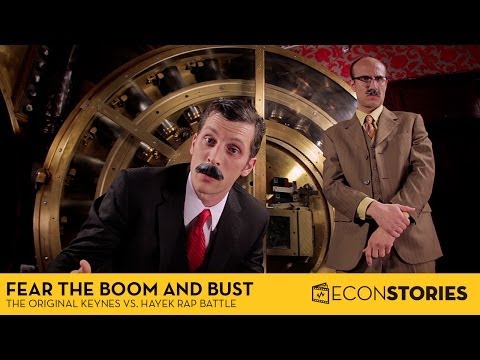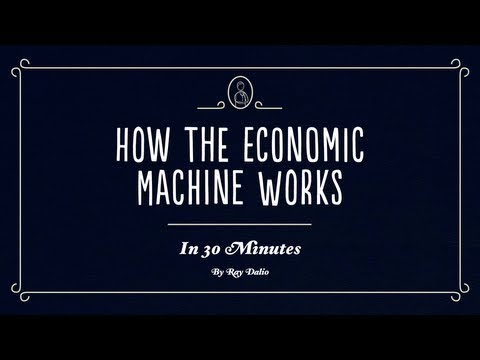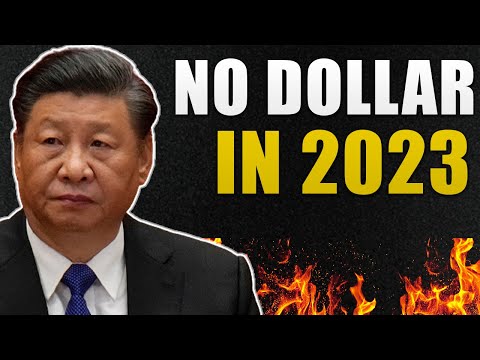The Role of Banks
Most of what we have been using as money is issued by banks, in the form of credit to businesses and consumers. Banks originate this money after having underwriters rate the creditworthiness and solvency of the business or individual they are lending to. During boom periods, as economic activity grows, borrowers can qualify for larger loans – which expands the money supply. During recessions, especially depressions when people lose their jobs, the money velocity slows as people tighten their wallets, and money supply shrinks as loans default. Banks cancel out debts to each other, but some banks may end up with really lopsided balance sheets and without outside help, a run on the bank can bankrupt them completely.
What we know as “the dollar” today is actually a lot of different financial instruments. These include the original coins minted from precious metals, which only the US Treasury had the authority to mint, and only on direction it receives from the Legislative Branch of the US Government. Often times, however, people ended up using paper money issued by banks, who kept reserves in the form of gold and silver bullion in addition to officially minted coins in their vaults.
Much of what was in use as money in the 19th century USA had been banknotes issued by local banks, during a time referred to as the Free Banking Era. Such money was not always dependable although the banks were overseen by individual states, though not the Federal Government. The industrial revolution was followed by periods of long depression, as well as bank runs and financial panics.. In 1907, it took the combined forces of J.P. Morgan and other wealthy Wall Street financiers to rescue the banks from a large crisis of confidence, much as how the leaders of FTX and Binance sought to set up funds to rescue the crypto space this year.
In response to all this, the Federal Reserve system was secretly architected in 1910 and authorized by the US Congress in the Federal Reserve Act in 1913 under Woodrow Wilson. (His oft-shared regrets about signing this bill are fabricated by the way.)
The Federal Reserve was tasked with a mandate of keeping employment high when it’s not high enough, and keeping inflation low when it’s not low enough. Sometimes, in order to accomplish one, they’re willing to sacrifice the other. Thus, a lot of the economy has been determined by interest rates set by the central banks’ monetary policy, pitting Austrian economists against Keynsian economists who argue for a stimulus during periods of massive job loss and layoffs:
Such was the case during the Great Depression, when between a third and a half of the nation’s banks collapsed. Monetarists like Milton Friedman, who helped found the Chicago School of Economics have argued that the Fed’s job was to bail out the banks, and for decades blamed it for standing by as money supplies imploded.
Monetarists believe that inflation and joblessness are a direct result of the money supply in the system. Milton Friedman famously said that “inflation is always and everywhere a monetary phenomenon”. Friedrich Hayek, in a similar vein, argued for keeping the money velocity (nominal spending M*V, as he referred to it) relatively stable and constant, which would presumably require intervention by the government as well. But economists’ prescriptions were different: in 1936, when Keynes published his famous General Theory, he spoke about the Paradox of Thrift, while six years earlier, Hayek published a critique of a very similar idea by two other American economists.
In my opinion, one of the most straightforward explanations of business cycles and debt cycles comes not from Austrian or Keynsian economists, but from Ray Dalio, who founded one of the largest hedge funds in the world:
The US Government
Over the last 150 years, the US Government did in fact take powerful moves to revolutionize our money supply, often as a way to deal with a cataclysmic event.
-
In the 1800s, banks were issuing most of the money in the nation. When Lincoln came into office, more than a third of the circulating money in USA was counterfeit. In response, Lincoln’s administration established the Secret Service, whose first job it was to strictly enforce the laws against counterfeiting. The same evening he established it, Lincoln was assassinated. It took two more presidential assassinations (Garfield and McKinley) before Congress added presidential protection to the list of duties of the Secret Service, which is what they’re mostly known for today.
-
In the 1860s, they issued an emergency paper currency called the Greenback, in order to finance the US Civil War (the bloodiest conflict in United States history) and prevent secession of the Confederacy. The Greenback competed with local banknotes, but unlike those banknotes, it was accepted nationwide for payment of any tariffs or land taxes (the only types of payments the US government could legally levy at the time). This helped it it quickly become the most widely used form of paper money in the USA.
-
In 1962, the US Congressed passed the Legal Tender Act making the Greenback legal tender for all debts, public and private. This meant that courts would not enforce demands by lenders for gold, if greenbacks were offered instead. Eight years later, the US Supreme Court struck down that law as unconstitutional. In response, President Ulysses S Grant and the Congress nominated two additional candidates to fill judicial vacancies, and the newly reformed court reversed this decision in its very next session.
-
In 1913, the US Congress and Woodrow Wilson established the Federal Reserve system, which as I’ve already said was conceived in secret three years before. Today, the Federal Reserve system involves multiple large banks, who also run the Automated Clearing House (ACH) system that many people and businesses use to send money to each other between banks.
-
In 1933, a few months after taking office, FDR declared a nationwide bank moratorium to prevent runs on banks during the Great Depression. A few months later, the US Congress took the United States off the Gold Standard, by enacting a resolution nullifying the right of creditors to demand payment in gold. This was done following Britain’s leaving the gold standard two years earlier, in 1931. But FDR went further, ordering that all large gold certificates over $100 be sold the government in exchange for other money, for the set price of $20.67 an ounce. The next year, the government increased the price of gold to $35 an ounce, allowing it to print more money.
-
After World War 2, the USA ended up with the majority of gold in the world. This gave them the economic power to gather the leaders of 44 nations, at Bretton Woods in the United Nations’ Monetary and Financial Conference, and propose that the United Stated Dollar will become their dominant reserve currency. As a result, the United States Dollar replaced the British Empire and the Pound, that had previously been in wide use as a reserve currency. The conference also led to the of the World Bank and the International Monetary Fund, both headquartered in the United States, to facilitate dollar-denominated loans and exchanges around the world.
-
In 1971, Nixon announced that the US government would “temporarily” suspend conversion of dollars into gold at a fixed value, and that suspension has been in place to this day. Thus, the US Dollar became largely independent of gold since that point. Instead, it became far more tied to oil.
-
As more of the world wanted oil, United States struck deals to develop the Middle East oil countries and protect them / sell them weapons, in return for a monopoly on convertibility of oil to dollars. The excess reserves of these countries were then additionally invested in US Treasuries, through their sovereign wealth funds, helping increase demand for US treasuries.
Today
-
Financial crises in the USA tend to spread around the world, even before the Bretton-Woods system. The Great Depression had a big effect on Weimar Germany, a big trading partner of the USA, leading to the rise of Nazi party.
-
Following the 2008 financial crisis, and the more recent pandemic in 2020, the US Government and Federal Reserve stepped in and took aggressive measures to prevent the collapse. This led to the infusion of trillions of dollars into the US economy.
-
Not many people remember this in 2022, but in 2022, the markets had a major slump. A few months earlier in 2019, the bond yield curve had already inverted and the USA seemed headed for a recession. When the pandemic arrived in 2020, government responded with lockdowns that bankrupted a lot of businesses, and this seemed to create a perfect economic storm.
-
The Federal Reserve leapt into action, lowering bank reserve requirements to zero on March 15, 2022. Following this, banks originated trillions of dollars in stimulus payments and loans under the Payment Protection Program, as well as the Economic Injury Disaster Loan program in partnership with the SBA. The PPP loans were eventually forgiven (the originating banks essentially canceling their debts to each other). But this increased money in the economy, together, with battered supply chains in everything from meat to microchips, led to steady inflation.
-
And now, both the USA and China are ambitiously looking forward to getting into the game of issuing their own digital currency, putting them in competition with their own system of banks (as well as stablecoin issuers around the world).
Consequences for the World
We’ve written about why it would be nice to have an alternative based not on banks or large state governments: something that’s by the people, not just for the people. This is becoming increasingly true, not just around the world but right here at home as well.
Today, the tie of dollars to oil has severe consequences for the economic and political stability of countries from Sri Lanka to Haiti (which the United States had previously intervened in with a heavy hand).
The US Dollar and Treasuries are what gives the US government an unmatched ability to borrow on its economy, but eventually the bill does come due, and mean reversion does take place. Countries like Saudi Arabia, Egypt and even Turkey have expressed an interest in joining BRICS, which could overtake the G7. Billions of people have been lifted out of poverty in India and China, and are set to become an economic force in the coming years. But thanks to technology, the question doesn’t have to be which economic hegemon should rule the world – the question is whether we the people can organize an alternative, something like Bitcoin but actually designed to be viable means of exchange. That’s the Intercoin project.


